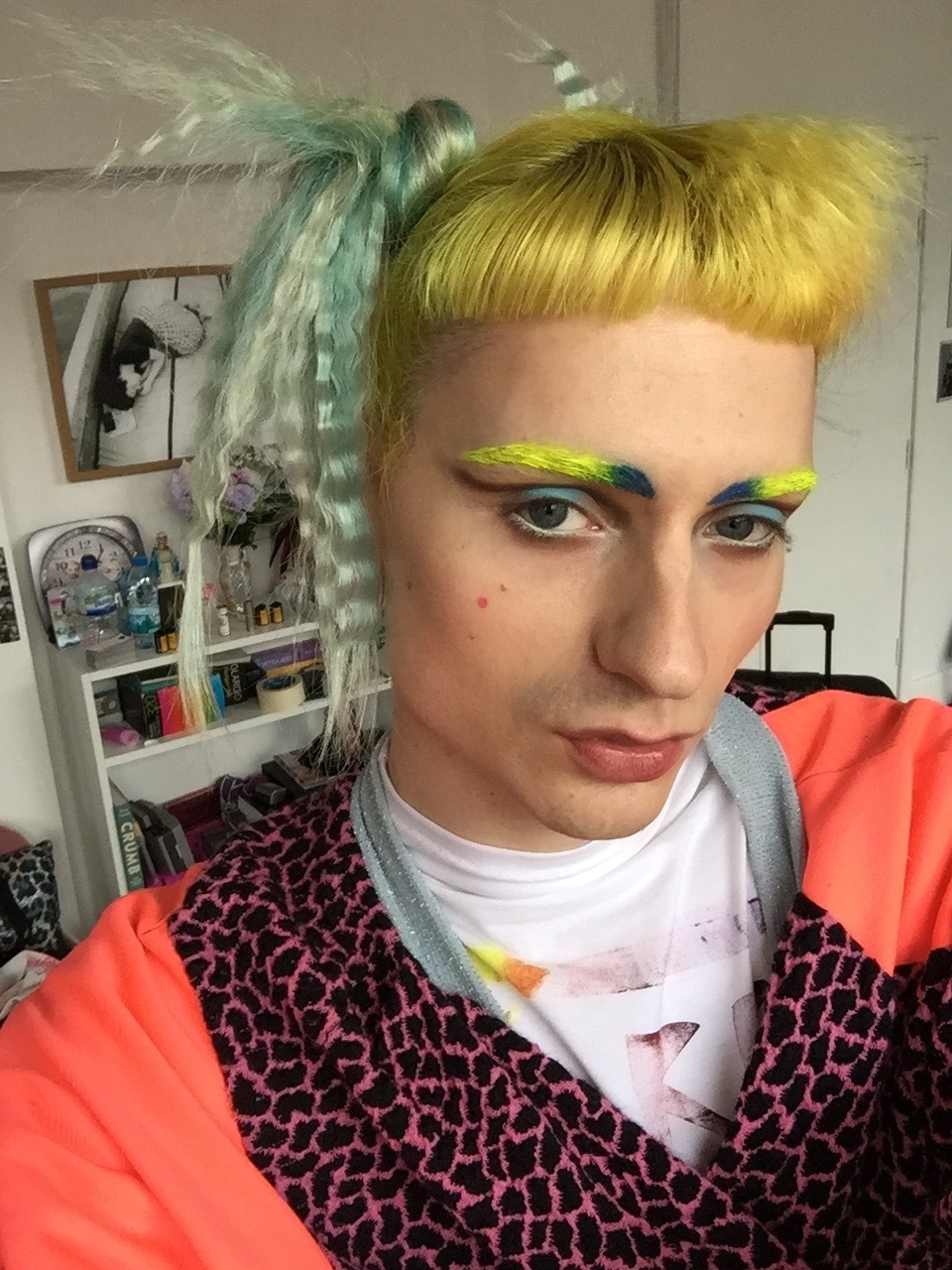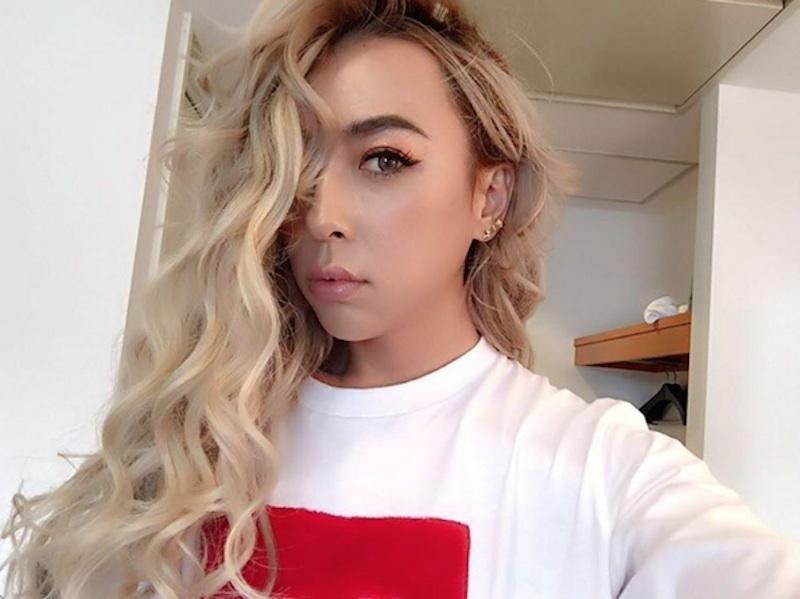Ten years ago, most men would laugh at the idea of moisturizing. Now we’re beginning to see the start of something completely different. The rise of the new male beauty tribe — one that’s unafraid to use makeup as a form of self expression, rather than just a beauty enhancer.
In Japan, new trends like Genderless Kei — in which boys have dyed hair, contact lenses, nail polish, and makeup — are surfacing. Then there are the tween beauty experts with thousands of followers, like 16-year-old Looking for Lewys or 17-year-old Barbiegutz, who both embody a fresh faced, experimental approach to beauty.
At the same time, the mainstream market for male beauty is growing. Mrporter.com, which sells everything from Tom Ford Beauty concealer to a sonic system deep cleansing brush by Clinique, reported a 300% growth in men’s beauty and grooming products in 2015. In China, year-on-year growth for men’s toiletries has exceeded 20% since 2010.
Male beauty is no longer a taboo subject. The language around it has shifted. There’s a huge potential market for innovation. As platforms like Instagram and YouTube continue to connect millions of people from around the world, what seems like a rarefied aesthetic — typically found among gender-agnostic members of Generation Z — will undoubtedly become far more prevalent and normalized.
“There’s always been boys in makeup it’s just been underground,” says fashion designer Matty Bovan, who typically uses moisturizer, concealer, eyeshadow primer, shadows, a colorful spectrum of mascara, a dash of blush, lipstick, and the odd beauty spot. “Now with phones, it’s all documented. By people seeing it, it can inspire, which is always positive.”
It’s not just about makeup. Many are taking it to the next level, experimenting with Decora and Kawaii culture. Jakob Kasimir was studying photography in Berlin when he grew tired of searching for his perfect ‘crazy’ male model. Instead, he created Candy Ken, a rapper outfitted with Hello Kitty stickers, pink contact lenses, and colored eyebrows that has since been championed by Nicola Formichetti, and, of course, loved by Jeremy Scott.
“The internet is helping everyone to be more open minded because you can’t hide things there,” Candy Ken explains. “I’m sure there were always men that loved makeup but who were unable to express themselves. With Instagram and other social media platforms, we can finally enjoy and see people like that. It helps everyone and motivates the ones that already have the passion.”
Day to day, Bovan and Candy Ken might still get some odd looks on the street, and, unfortunately one or two haters, but big brands are beginning to recognize and empower these early adopters — be it through developing new lines for men or changing their messaging.
M∙A∙C, for example, has worked with superstar NYC It Boys Peter and Harry Brant to create a new range, which includes neutral shadows, concealers, lip stains, and contour brushes. “Our mantra is All Ages, All Races, All Sexes,” Karen Buglisi-Weiler, M∙A∙C Global Brand President, explains to i-D.
The cosmetics giant has also helped promote documentaries that explore issues faced by the trans community, and raise funds that improve their lives. Caitlyn Jenner has her own special edition MAC lipstick called Finally Free, and 100% of its sales benefit the M∙A∙C AIDS Fund’s Transgender Initiative.

“It’s all about blurring the lines between masculine and feminine,” says M∙A∙C Cosmetics Director of Artistry, Terry Barber, who points to the trend for gender neutrality at this season’s London Collections: Men.
Designers like Sibling, J.W.Anderson, and Charles Jeffery mixed their mens and womenswear lines together, or paid little attention to traditional notions of masculine and feminine attire, representing male and female beauty as one. “Deepening brows, dirtying eyes, and ruddying the skin created a very new type of unified gender grooming,” says Barber. “Beautiful boys and handsome girls.”
It makes sense to look for the next male beauty trends in the women’s market, then — where influencers are fast moving away from the idea of perfection. Instead, makeup is seen as a form of self expression. “Makeup can work more like skin jewelry or a temporary form of tattooing,” explains Barber. “Simply focussing on eyes, lashes, and lips is really more of a female recipe, whereas makeup adornments used in other ways feels more genderless and expressive.”
Not everyone is going to go crazy with luminescent eye shadow overnight. But then again, who thought manscaping — yes, that’s tending to your ‘man garden’ — would become a normal pastime for men a few years ago?
Makeup artist and beauty YouTuber Jordan Liberty, known for his tutorials on how to create Studded Sugar Skull looks or simple rose smoky eyes, points out he’s gone through a few phases of male beauty himself.
“Concealer and I first became friends in middle school during my awkward acne years,” says Liberty, pointing out it boosted his confidence. “Today I wear much more makeup in my YouTube videos than in real life, but I never leave the house without a few enhancements.”
Liberty now sees a lot more straight men getting interested in makeup and grooming “It’s pretty awesome,” says Liberty. “I love that our idea of masculinity is becoming so much more secure and is really descending from the classic archetype. Self expression isn’t just for ‘sissies’ anymore; it’s for everyone.”
There’s still one big hurdle, or worry, for men interested in beauty though. “I’m asked constantly about what the ‘best’ color choice is to complement a given eye color, skin tone, or outfit,” he explains. His advice? “To be honest, I always say that makeup is 90% personality and 10% application.”
Even Shiseido, often seen as a far more conservative Japanese brand, recently turned heads with “High School Girl?” a campaign it aimed at a Generation Z audience, in which a classroom of beautifully manicured students are — spoiler — revealed to be boys in full makeup.
It signals a shift in thinking where a beauty regime is more than just soap and water for the male mass market. In other words, makeup is no longer being seen as something vain or effeminate.

“We are, of course, very much aware of the current shift toward using either products targeting the opposite gender or products that are inherently non-gendered,” says Rintaro Okamura, Head of Product at Shiseido Men. “We see this not as a mere consumer trend happening within the realm of cosmetics, but rather as a small part of a larger societal shift.”
Okamura points to megatrends like the surge in men’s interest in fashion over the last decade, the empowerment of women, and, consequently, their greater numbers in the workforce. “The more women a man is surrounded by daily, the more he will do to look after his appearance,” explains Okamura. “Women now have more power to choose their partner, so male candidates need to work harder to make themselves attractive partners, including putting more effort into maintaining their appearance.”
The fact so many straight men and now more curious than ever about experimenting with makeup shows there’s a new idea of masculinity emerging, or perhaps even the signs of a true genderless future, where artistry is celebrated, scaremongering about wrinkles is finally washed down the drain, and self expression is for everyone.
“I love that you can be whatever you want,” says Candy Ken. “It’s empowering, beautiful and fun. Looking the same each day is just too boring.”
Credits
Text Maks Fus-Mickiewicz
Photography Benjamin Ehrenberg
